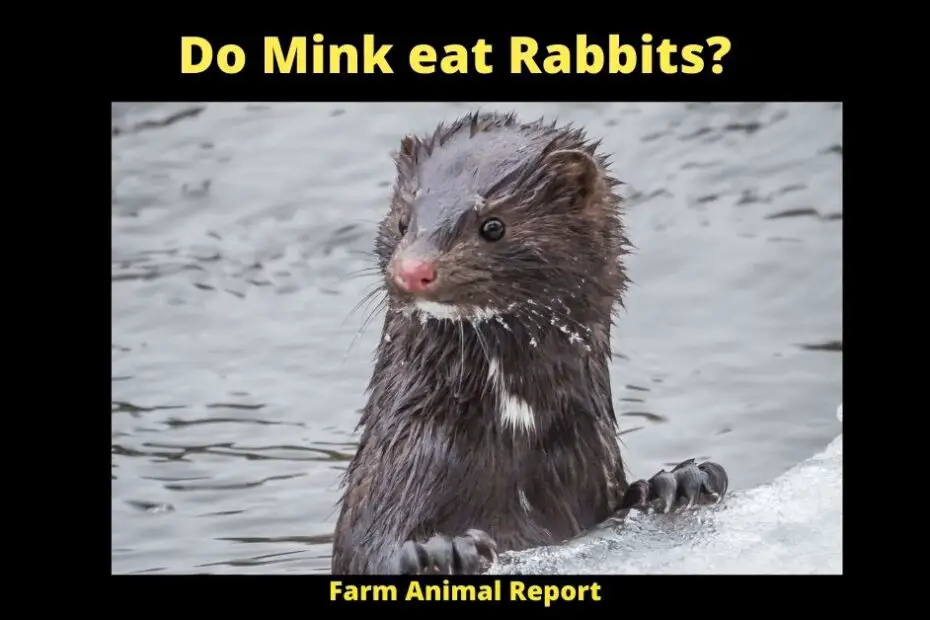Do minks eat rabbits? This is a question that many people have asked, and the answer is not entirely clear. Some experts believe that minks do eat rabbits, while others believe that they only eat fish. The truth is that no one really knows for sure what mink eat.
One thing we do know, however, is that minks are carnivores and they prefer to eat meat. This means that they are likely to prey on small animals like rabbits if given the opportunity.
Do Mink eat Rabbits?
Minks are a type of small carnivorous mammal that is closely related to weasels and otters. They are proficient swimmers and have semiaquatic habits. Minks are found throughout the Northern Hemisphere, but they are most common in North America.
These furry creatures have long, slim bodies and brown or black fur. Their diet consists mostly of small rodents, fish, birds, and rabbits. In fact, minks are one of the few predators that can successfully prey on rabbits. Their long, slender bodies and sharp claws allow them to penetrate a rabbit’s burrow and catch their unsuspecting prey.
Primer Of Livestock Guardian Animals
Minks typically live alone or in pairs, but they will occasionally form small colonies. They are relatively shy animals that generally avoid contact with humans. However, they can be dangerous if they feel threatened or cornered. Thankfully, their numbers have remained relatively stable in recent years and they are not currently considered to be at risk of extinction. Do Mink eat Rabbits?
Mink are small, semiaquatic members of the weasel family. They are native to North America and Eurasia and have been introduced to South America, Africa, and Australia.
Mink are proficient swimmers and climbers and have been known to travel up to 16 kilometers in a single day in search of food. Their diet consists primarily of fish, amphibians, and small mammals such as rabbits.
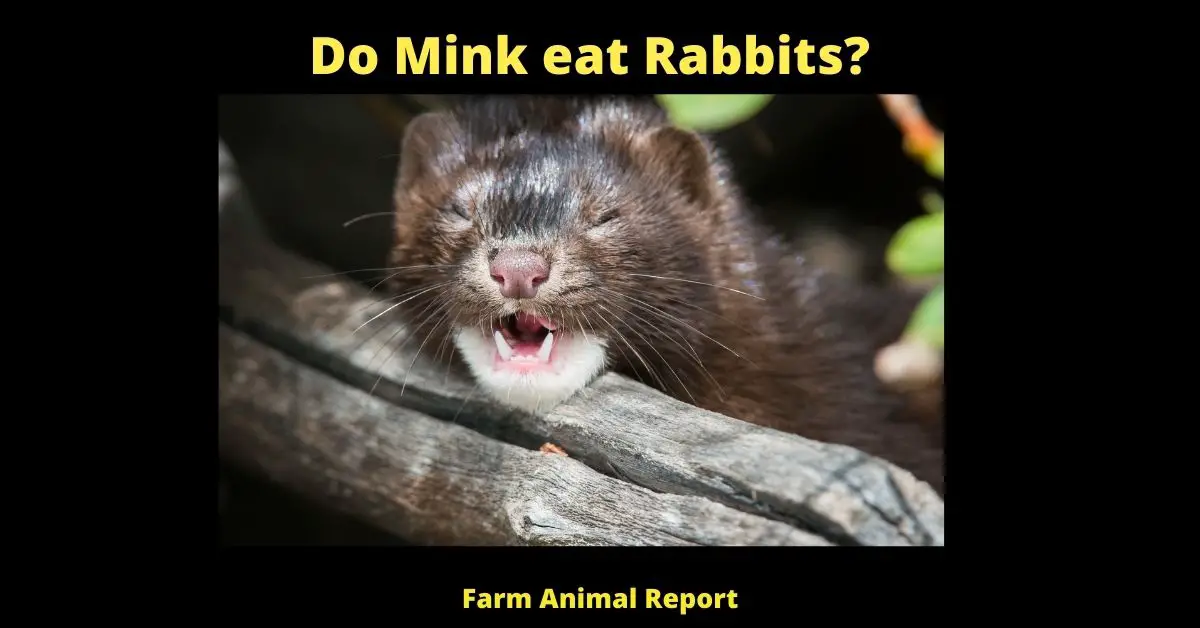
Mink are solitary hunters that stalk their prey before killing them with a swift bite to the neck. They typically cache excess food for later consumption, and will often den in the abandoned burrows of other animals. While their fur has been widely harvested for use in clothing, Mink are also hunted for sport in some parts of the world.
What does Mink Eat?
Mink are small, semi-aquatic carnivores that are closely related to otters and weasels. They are found throughout North America, Europe, and Asia, and their diet varies depending on their location. In general, mink eat a variety of small animals, including rodents, fish, frogs, and insects. They are also known to eat birds and their eggs.
In some cases, mink will even kill larger animals, such as rabbits or deer. Mink are skilled hunters and can often be seen stalking their prey along the banks of streams and rivers. When hunting for fish, mink will dive into the water and swim after their prey. Once they have caught their meal, they will drag it ashore and eat it on land.
How Does a Mink Catch a Rabbit?
A mink is a small, carnivorous mammal of the Mustelidae family, which also includes weasels, otters and ferrets. Native to North America and Eurasia, minks have long, sleek bodies and are proficient swimmers. They are also excellent hunters, and their primary prey is rabbits.
Minks typically hunt alone and use a combination of stealth and speed to catch their prey. They will often hide in wait near a burrow or along a rabbit trail, and when a rabbit comes within range, the mink will spring into action.
Chasing the rabbit at high speed, the mink will quickly close the distance between them. Once they are close enough, they will pounce on the rabbit and kill it with a crushing bite to the neck. In this way, minks are able to take down even the largest rabbits with ease.
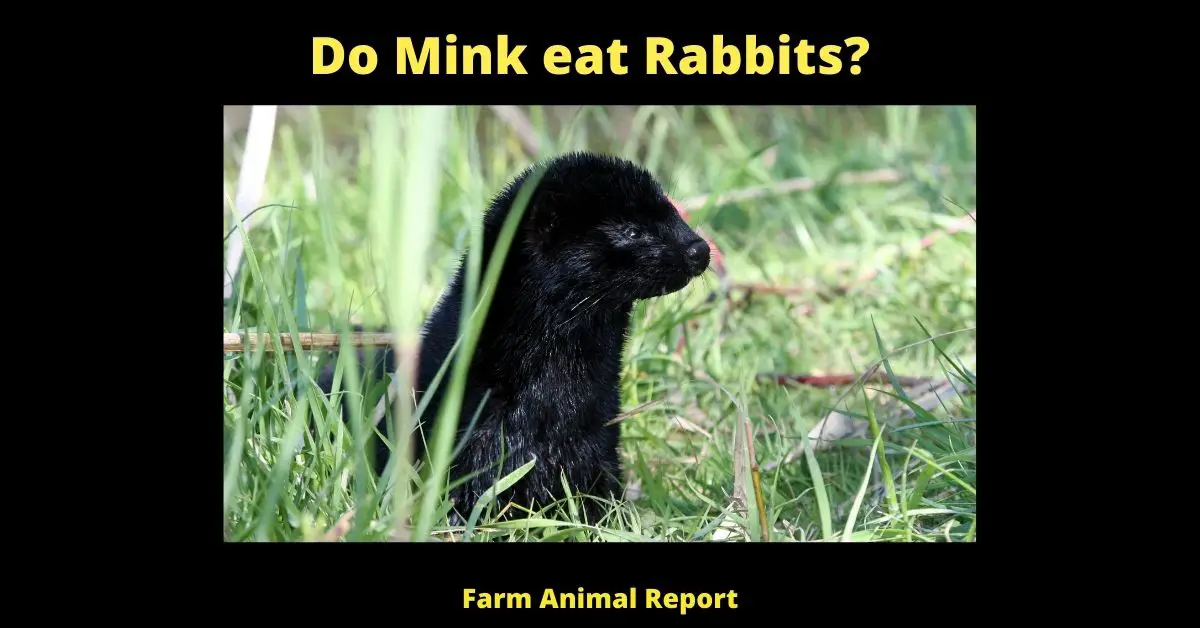
Do Mink Kill Rabbits for Sport?
Mink are small, carnivorous mammals of the mustelid family, which also include weasels, otters, and ferrets. Native to North America and Eurasia, minks have been widely introduced to other parts of the world, including South America, Africa, and New Zealand.
In the wild, minks typically live in wetland habitats near bodies of water. They are proficient swimmers and excellent climbers, and they are known to kill rabbits for sport. Studies have shown that mink typically kill more rabbits than they can eat, suggesting that they derive some satisfaction from the act of killing itself.
While the precise motivations underlying this behavior are not fully understood, it is clear that mink play an important role in controlling rabbit populations in many areas of the world.
How do Rabbits Escape from Mink?
Mink are small, carnivorous mammals of the Mustelidae family, which also include weasels, otters, and ferrets. native to Europe, Asia, and North America. Mink are adept swimmers and climbers and often live near water sources such as rivers, lakes, and marshes.
They typically eat small rodents, birds, and fish, but have been known to kill larger prey such as hares. Mink is a major threat to rabbits, as they are both predators and competitors for food.
Rabbits are capable of outrunning mink in short bursts, but mink are relentless pursuers and will eventually catch up to their prey. In order to escape from the mink, rabbits will often enter their burrows or hide in dense vegetation.
If a mink does catch a rabbit, the rabbit will usually be killed quickly by a bite to the neck. However, some rabbits have been known to fight back against their attackers and even kill them. Bystanders have also been known to intervene on behalf of the rabbit, chasing away or killing the mink. In such cases, the rabbit’s best defense is often to flee and hope for the best.
How Fast is a Mink?
A mink is a small, semi-aquatic mammal that belongs to the weasel family. Native to North America and Asia, minks have long, slim bodies and soft, thick fur. They are excellent swimmers and can reach speeds of up to 15 miles per hour in water. On land, they are not as fast, but can still reach speeds of up to 10 miles per hour.
Minks are relatively timid animals and are not often seen by humans. However, they can be very aggressive when cornered and will attack humans if they feel threatened.
This aggression, combined with their speed and agility, makes them very difficult to catch. As a result, minks are prized by fur hunters and are often hunted for their valuable pelts.
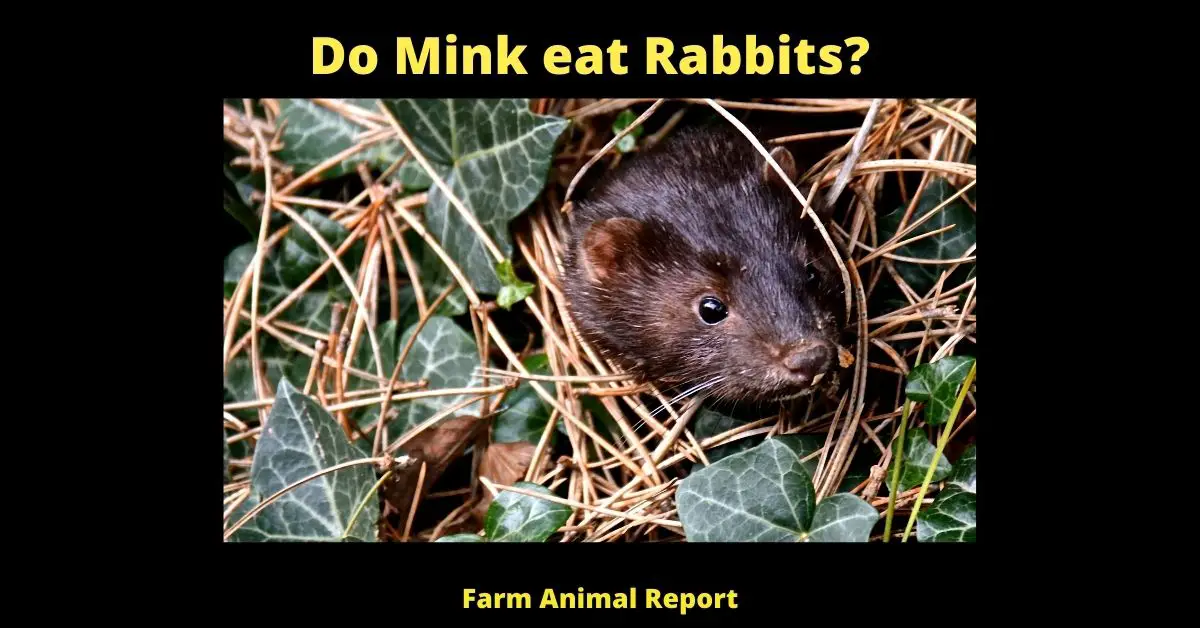
Is A Rabbits Hearing Is Much Better Than a Mink
Researchers have found that rabbits have much better hearing than minks. In fact, rabbits can hear sounds at a frequency of up to 35,000 Hz, while minks can only hear sounds at a frequency of up to 12,000 Hz. This means that rabbits can hear sounds that are more than two times as high as the highest sound that a mink can hear.
This difference in hearing ability is likely due to the different shapes of the animals’ ear bones. The ear bones of a rabbit are much longer than the ear bones of a mink, which allows them to vibrate more quickly and absorb more sound waves. This difference in hearing ability is just one more way that rabbits are different from minks.
Is A Rabbits Sense of Smell Is Not as Good as a Mink
Rabbits and minks are both small, furry animals with long tails, but they have a very different sense of smell. Minks have a much better sense of smell than rabbits. Rabbits have a poor sense of smell because they lack the olfactory glands that are necessary for smelling.
Minks, on the other hand, have a very strong sense of smell because they have two pairs of these glands. This difference in sense of smell is due to the different lifestyles of these two animals. Rabbits live in burrows and are mostly herbivores, so they don’t need a strong sense of smell to find food or avoid predators.
Minks, on the other hand, are semi-aquatic predators that use their sense of smell to find prey and avoid becoming prey themselves. As a result, the different lifestyles of rabbits and minks have resulted in a very different sense of smell.
Are there different types of Mink
2 Types of Mink
Mink is a semi-aquatic species of mustelid, which means they are related to weasels, otters, and ferrets. There are two types of mink – the American mink and the European mink. The American mink is larger than the European mink and has a more uniform coat.
The European mink is smaller and has a more variegated coat, with patches of brown and white. Both types of mink are prized for their fur, which is soft, shiny, and waterproof. Mink are found in North America and Europe and have been introduced to Iceland, South America, and parts of Asia.
In the wild, they typically live near water sources such as rivers or lakes, as they rely on fish for a significant part of their diet. Mink are excellent swimmers and can stay underwater for up to six minutes. They are also proficient climbers and have been known to climb trees in order to escape predators or catch prey.
Do All Mink Eat Rabbits?
Both species feast on a variety of prey, including fish, rodents, birds, and other small animals. However, rabbits are not a common item on the menu for either type of mink. In fact, mink will only eat rabbits if they are desperate or if there is an abundance of rabbits in their territory.
The reason for this is that rabbits are not as easy to catch as other smaller prey animals. rabbits are also much larger than most of the other creatures that mink typically eat, so they can be difficult to kill. For these reasons, mink generally avoid hunting rabbits unless they are absolutely starving or there is an overpopulation of rabbits in their area.
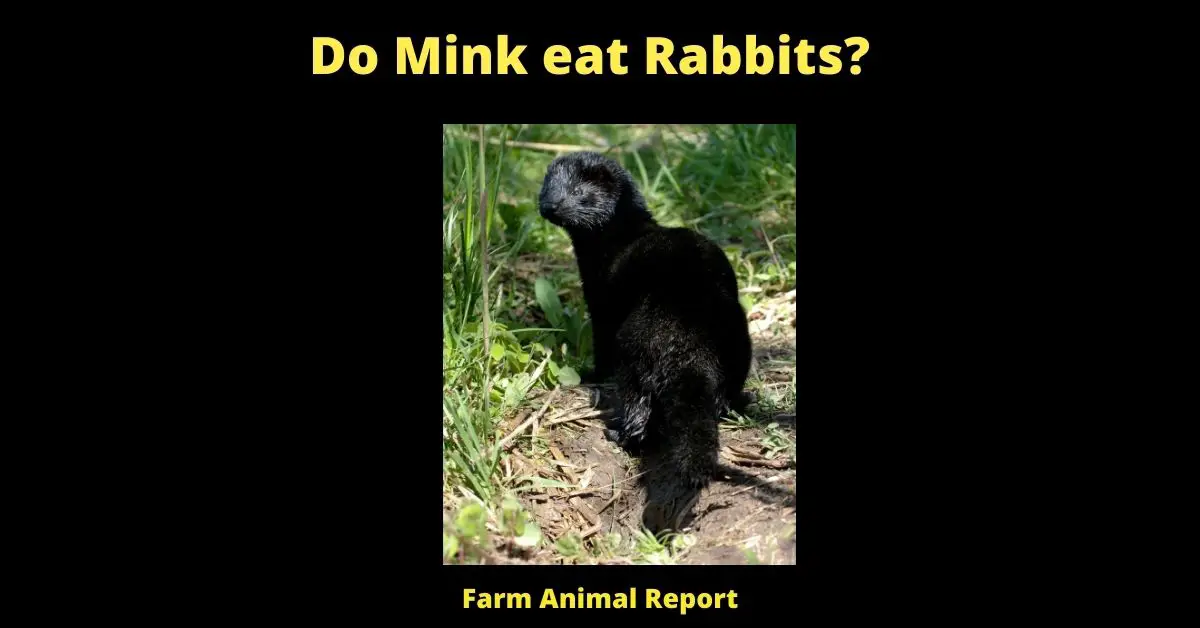
Do Mink Eat Rabbits More Than Any Other Animal?
Mink are a common predator of rabbits. In North America, mink will often take over an existing burrow system, using it to raise their own young. Mink typically hunt alone and ambush their prey, killing with a bite to the neck. Adult rabbits can put up quite a fight, however, and mink will often only take young or injured rabbits.
A study conducted in Iowa found that 24% of rabbit deaths were due to mink predation. This made mink the leading cause of death for rabbits, followed by coyotes (22%), dogs (15%), and hawks (9%). While mink certainly kill their fair share of rabbits, they are not the only predator that preys on this popular game animal.
Is there Mink in Europe?
Mink is a species of semi-aquatic mammal that is native to North America, Europe, and Asia. In Europe, mink are found in Scandinavia and parts of Russia. They typically inhabit wooded areas near lakes or rivers. Mink are relatively small animals, with males averaging about 2 feet in length and females averaging about 1.5 feet in length.
They have dark brown fur that is thick and lustrous. Mink are excellent swimmers and can remain submerged for up to six minutes at a time. In the wild, they typically eat fish, frogs, and small mammals. Mink are prized for their fur, which is used in a variety of garments, including coats and hats.
As a result of hunting and habitat loss, mink populations have declined in recent years. In Europe, mink are now considered endangered. Consequently, there are strict limits on hunting them and on the trade in their fur.
How to Protect your Rabbits from Mink?
It is important to protect your rabbits from mink. Here are some tips:
- Build a secure rabbit hutch that has a strong wire mesh over the top and sides, buried at least 30cm deep into the ground to prevent digging. The hutch should also have a solid floor that is raised off the ground.
- Place the hutch in a sheltered area such as next to a fence or hedge, and cover the roof with straw or hessian to provide extra insulation and protection from the weather.
- Install an escape door in the hutch so that your rabbits can escape if a mink does manage to get inside.
- Check the hutch regularly for signs of damage or attempted break-ins, and repair any damage immediately.
- If you live in an area where minks are known to be present, consider using electric fencing around the perimeter of the hutch.
What are Mechanical Ways I can Protect My Rabbits from Mink?
Fencing – A good fence is the best way to keep mink out of your yard and away from your rabbits. The fence should be at least four feet high, and the mesh should be small enough that a mink cannot squeeze through.
Electric Fencing – Electric fencing can be an effective deterrent for mink, but it must be used properly. The fence should be at least four feet high, and the wire should be placed close to the ground so that a mink cannot climb over it. The wire should also be electrified with a low-voltage current.
Sonic Devices – Sonic devices emit a high-pitched noise that is designed to deter animals such as mink. These devices are available commercially and can be placed around the perimeter of your property.
Cages – Cages can be used to protect individual rabbits from mink. The cage should be made of strong wire mesh, and it should have a solid floor that is raised off the ground. The cage should also be placed in a sheltered area, and it should be checked regularly for signs of damage or attempted break-ins.
What are Chemical Ways I can Protect My Rabbits from Mink?
There are a variety of chemicals that can be used to deter mink, including:
Ammonia – Ammonia is a strong-smelling chemical that can deter mink. It can be applied around the perimeter of your property, or it can be placed inside the hutch.
Mothballs – Mothballs are small balls of chemicals that emit a strong smell. They can be placed inside the hutch or around the perimeter of your property.
Pepper spray – Pepper spray is a chemical that causes irritation to the eyes and respiratory system. It can be used to deter mink, but it should only be used as a last resort.
What are Some Tips for Dealing with Mink?
If you live in an area where mink are known to be present, there are some things you can do to reduce the risk of them attacking your rabbits:
- Do not leave food out in the open, and make sure all garbage is properly sealed.
- Keep pet food and water dishes inside, and do not leave them out overnight.
- Keep rabbits in a hutch at night, and close all doors and windows to the house.
- Do not let rabbits roam free in your yard.
- Consider using electric fencing around the perimeter of your property.
If you see a mink on your property, do not approach it. Contact your local wildlife authorities for assistance.
What are the Fencing Solutions to Protect my Rabbits from Mink?
Mink is a serious predator of rabbits and can cause significant damage to your property in their search for food. Luckily, there are a number of fencing solutions that can help to protect your rabbits from these predators.
The most effective solution is to erect a wire fence that is at least four feet tall and has a mesh size of no more than one inch. The fence should also be buried at least six inches underground to prevent mink from digging underneath it.
In addition, it is important to ensure that the fence is topped with an overhang of wire or other material to prevent the mink from climbing over it. By taking these precautions, you can help to keep your rabbits safe from predators like mink.
Can Mink Open rabbit Cages?
Mink are small, secretive, and generally solitary animals. In the wild, they feed on a range of small mammals including rabbits and so it is unsurprising that given the opportunity they will attempt to predate on farmed rabbits. Mink are good swimmers and climbers and can therefore access housing that would exclude many other predators.
It is not known how often mink succeed in attacking farmed rabbits but they can cause significant damage and death when they do. The most likely time for mink predation is at night when the animals are relaxed and less alert but it can happen during the day as well.
Mink will enter cages through any opening that allows them access and once inside will kill as many rabbits as possible. The smaller the cage, the greater the chance of devastation as even one or two mink can cause extensive killing. The best way to protect your rabbits from mink is to provide secure housing that denies the animals access.
This means making sure that pens, hutches, and runs have no gaps that a mink could squeeze through and ensuring any overhead coverings are in good repair with no holes or weak spots. A buried wire fence around the perimeter of an enclosed area may also deter mink from attempting to access it.
What kind of Traps can I use to Trap a Mink?
Mink are small, predatory animals that can cause significant damage to poultry and game bird populations. Trapping is the most effective method of control, and there are a variety of traps that can be used depending on the situation.
Coil spring traps are commonly used to target adult minks, while kill-type traps are more effective for juveniles. Snares can also be used, but they must be carefully placed to avoid catching non-target animals. When setting any type of trap, it is important to use bait that is attractive to minks, such as fish or chicken parts.
The trap should also be placed in an area where minks are known to travel, such as along a fence line or near a water source. With careful planning and execution, trapping can be an effective way to control mink populations.
Live Traps also Work to catch mink if they are baited with the right Food.
Mink are notoriously difficult to control, but live traps can be an effective tool in your arsenal. These traps work by holding the animal alive so that it can be relocated or euthanized, and they can be baited with a variety of foods to attract mink.
Common bait items include fish, chicken parts, and eggs, but almost any type of food will work as long as it is high in protein. The trap should be placed in an area where mink are known to travel, such as along a fence line or near a water source. With careful planning and execution, live trapping can be an effective way to control mink populations.
Do Mink populations affect Rabbit populations?
The simple answer to this question is yes, mink populations definitely have an effect on rabbit populations. Mink is one of the main predators of rabbits, and as such, when mink populations are high, the number of rabbits tends to decrease.
This is because the mink will kill and eat the rabbits, reducing the overall population. Additionally, when there are fewer rabbits around, the mink will have a harder time finding food and may starve to death. Therefore, it is clear that mink populations can have a significant impact on rabbit populations.
Final Thoughts – Do Mink Eat Rabbits?
Mink is a type of mustelid, which is a family of carnivorous mammals that also includes weasels, otters, and ferrets. As their name suggests, minks are known for their luxurious fur, which has been prized by humans for centuries.
Mink are native to North America, but they have also been introduced to Europe and Asia. In the wild, minks typically eat fish, amphibians, reptiles, birds, and small mammals. While rabbits are not their preferred prey, minks will occasionally eat them if the opportunity arises.
For example, a study conducted in Sweden found that mink were responsible for predating 14% of the radio-collared rabbits that were tracked over the course of two years. In general, however, minks prefer to stick to their usual diet rather than branching out into new foods


